
Moving Around the City: Low-income Residential and Socio-Economic Mobility, by Peter M. Ward
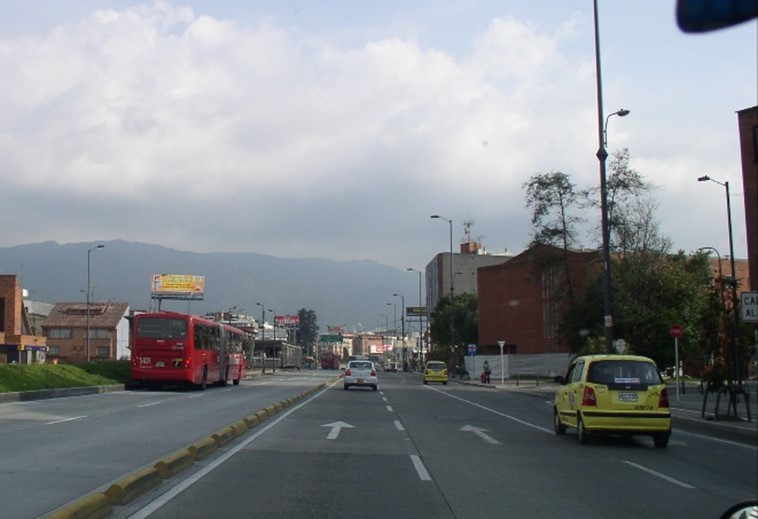
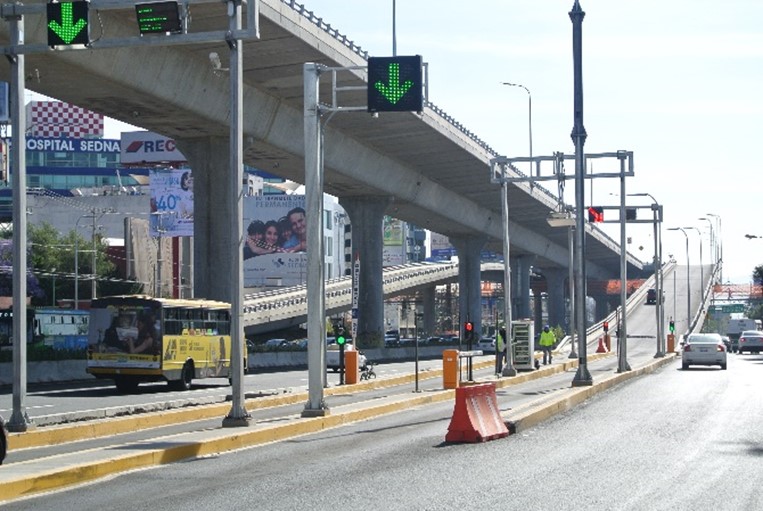
Figures 1 & 2. Modern Transportation Systems. Left: Bogotá. Transmilenio bus rapid transit. Right: Mexico City’s Rapid Ringroad (Periférico) new extension
Relative to the large corpus of work about regional and international migration, people’s intra-urban spatial mobility patterns and trajectories (i.e., in-and-through the city) was largely neglected until a “mobility turn” in research interests occurred late 1990s early 2000s, much of it from European researchers. Before that time the focus of residential decision making was largely on movement tied to housing opportunities and aspirations, and to household and life course dynamics, both of which sought to understand the drivers of mobility – at least for those who could afford to choose the neighborhoods in which they sought to buy or rent housing. Classical work from the USA and elsewhere (Rossi and others) suggested that, for those who could afford to exercise choice, residential selection was in part linked to stage in the life cycle: singletons and young couples opted for renting in the cosmopolitan center; while married couples moved into home ownership to raise their families in the newly expanding suburbs, later downsizing as “empty nesters” once the kids had grown and left home. While somewhat idealized, the theory appeared to dovetail with the dynamics of residential growth and urbanization in the USA and elsewhere during the second half of the twentieth century.
Below we will briefly explore explanations for intra-urban residential mobility for lower-income populations in Latin American settlements, particularly that tied to the older consolidated informal settlements that is the primary unit of analysis of the Latin American Housing Network’s comparative study, but before doing so it is important to recognize other more recent research in the Americas and elsewhere that form part of the “mobility turn”:
- Socio-economic upward mobility
- Gender and mobility
- Commuting patterns, and COVID home-based working
- Daily mobilities for: work, shopping, school, entertainment, etc.
- Transportation research & usage; origin and destination patterns
- Residential displacement and “shocks” (renewal programs, disasters, etc.)
- Insecurity, intra-household dynamics including intimate partner violence.
- And in Europe “aquatic mobilities” such as households working the barges and shipping along river systems.
Several of these issues will be discussed in the October-December 2023 LAHN lecture series.
Intra-urban Mobility (and Immobility): Comparative Insights from the LAHN
The LAHN study focused upon the housing policy challenges confronting the consolidated self-built settlements established throughout Latin America during the 1960s-1980s, which today form a large working-class swathe of the urban residential fabric. These squatter and other informal settlements were populated by young (often) migrant households who sought to capture the land and then slowly build a home upon which to raise their families – a term that J.F.C. Turner called housing “consolidation”.
Relevant for this blog are two of Turner’s ideas about mobility. The first relates to migrant priorities for different housing options, and the residential trajectories and levels of spatial mobility that arise. Informal land capture at the city periphery offered low-income young migrants an opportunity to eventually become homeowners by moving outwards from the initial “bridgehead” accommodation they had sought as renters in tenements in and around the city center, to vacant un-serviced lots at the urban periphery. Putting up a temporary shack and then self-building a dwelling over 15-25 years (as “consolidators”) offered them a place to raise a family and a route to ownership, albeit informally.
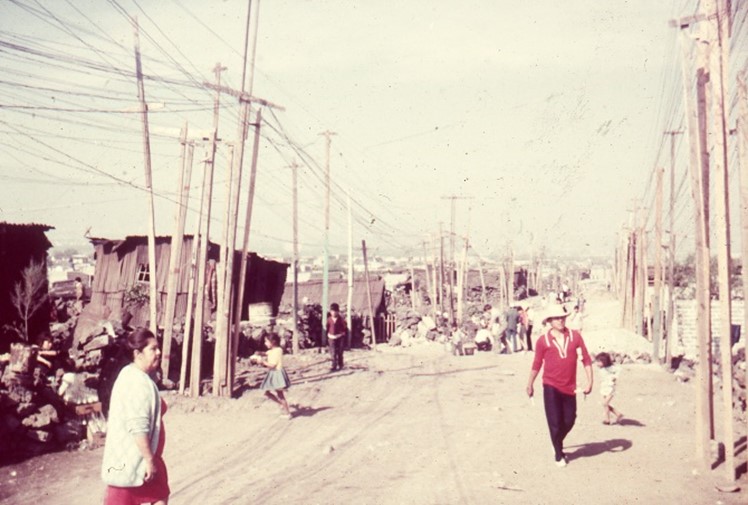
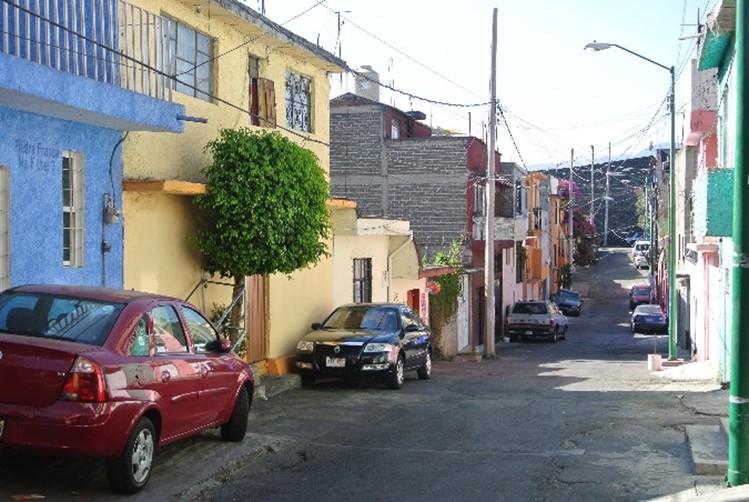
Figures 3 & 4. Self-help Consolidation Over the Years Left: Informal land capture at the periphery, 1973. Right: a similar settlement now consolidated after 30 years. (Both are in the southern part of Mexico City)
In fact, rather than some generic center-to-periphery renter-to-informal owner movement, most residential trajectories were largely driven and shaped by contemporary housing market constraints and by informal housing production opportunities, and most fledgling settlements were spawned by populations coming from nearby barrios rather than the city center tenements. Today, these are the working-class consolidated neighborhoods that are the focus of the LAHN study discussed in an earlier Blog.
Low-income Owners and (Im)Mobility
To my knowledge no study has systematically analyzed the degree to which pioneer settlers failed as home builders and settlers, quitting, and moving out of their incipient homes and lots after only a year or two. However, while undoubtedly always a significant minority, the very existence of extensive consolidated settlements today bears evidence that for many young migrants of yesteryear this was a viable route to housing in which to successfully raise their families providing a home for their young children (many of whom are now adults).
Now aged in their 60s and 70s, most of these pioneer homesteaders continue to live on the same lot upon which they built their home. Depending upon the city and age of the settlement, the LAHN data show that, on average, most households have lived on their lot throughout, invariably for 20 or more years (Table 1). In one study for barrios formed in the 1970s in Bogotá and Mexico City – almost 80% lots were occupied by the original family. In short, Immobility Rules! or as one author framed it: “A Home is Forever”.

Important Note. The house price data are often based upon small sample sizes and combine values for more than one settlement some of which vary greatly in lot size, location, and age (e.g., villas versus loteos populares in Buenos Aires). Readers can explore these and other household and housing data on the LAHN’s database page starting with the comparative EXCEL matrix
That said, it is important to emphasize that the LAHN study also shows very high levels of residential mobility or “churn” in and out of these lots and homes as kinsmen and others seek refuge with family members; as adult children move out, (and sometimes return – see Figure 5, “Ignacio” in 2009); and as owners become petty landlords, renting out rooms. Young renters especially tend to show high levels of residential turnover, making frequent moves between rentals as they look for the best deal.
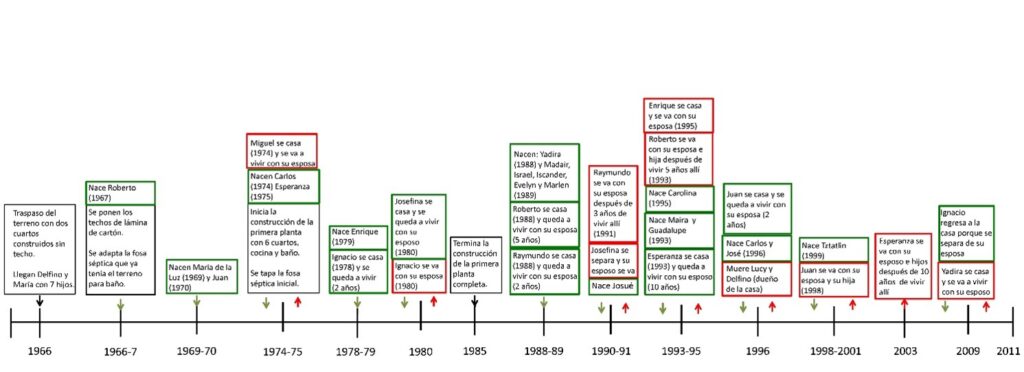
Figure 5. Household Churn. Dwelling construction trajectory and entry and exits of household members. Owners (Delfino and Maria) stay put; adult children come and go. Green arrows are entries; red are exits. Source: Ward, Jiménez and Di Virgilio, 2014.
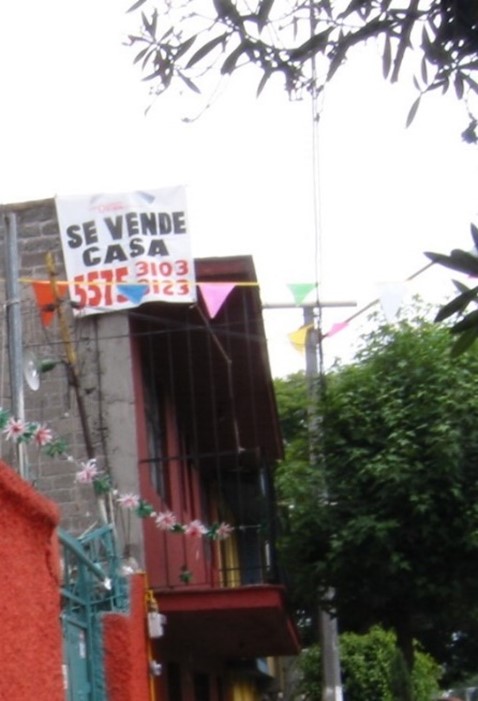

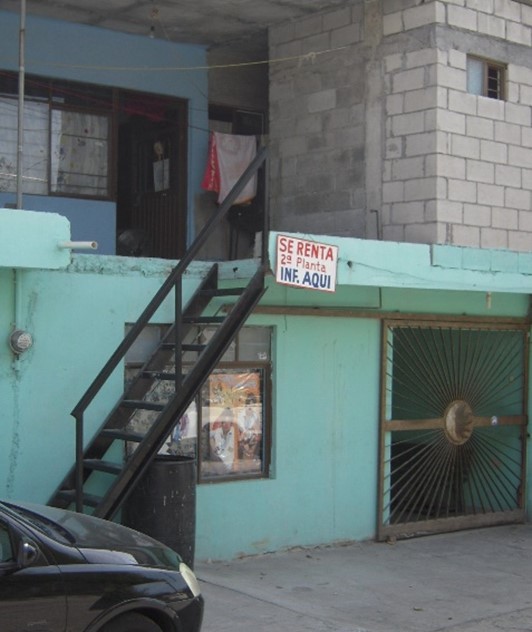
Figures 6, 7 & 8. Signs of Mobility. Two-story home for sale “se vende casa” (Colonia Isidro Fabela, Mexico City. Photo courtesy of Edith Jiménez). “Shack for rent” (Cuarto de Madera) in Colonia La Florida, Guatemala City. “For rent – second floor”, Colonia Villa Santa Lucía, Monterrey. As we explain in the text, movement between rentals accounts for most of the residential mobility in consolidated settlements today. See Blog on the rise of renting
What Upward Socio-Economic Mobility?
Turner’s second proposition analyzed here was that unlike middle-class families whose upward socio-economic mobility often translated into residential moves between residential neighborhoods to which they aspired (a la Rossi), for the working-classes potential job-based income growth was virtually null. However, his argument was that the poor could achieve socio-economic mobility could be achieved in-situ through homebuilding an asset over many years using one’s own “sweat equity” (i.e., self-help labor).
This idea of in-situ socio-economic mobility derived from self-building property valorization underestimates the long-term social costs of raising a family from poverty and in such dire physical conditions. Nevertheless, gaining a foothold as owners and consolidating over time has created an important asset for many poor households. Using different sources such as known sales, owner self-estimations, and property values in the local cadaster (where a reliable one exists), the LAHN surveys allowed us to gauge the current exchange value of the property. Although it varies greatly by city case study, the data show that housing in many consolidated neighborhoods has acquired real and substantial asset value of many thousands of dollars (see Table 1).
However, there is little evidence that this comprises upward socio-economic mobility for the owners, nor that they benefit financially from their newfound property values. This is because invariably owners cannot sell since the home continues to have an ongoing use-value for the family; indeed, it also often figures large among the (adult children) heirs’ ownership aspirations. Informal land acquisition at the periphery is no longer as freely available as in the past, and if it were adult children raised in the barrio are reluctant to move to the distant periphery anyway. So, for some at least, a share of the inheritance and continued residence of the parental lot is the best option for future ownership. Another problem is the difficulty in selling the home even where the owners wish to do so. Given the values cited in Table 1, and the lack of formal mortgage financing in informal settlements, few low-income buyers have the cash to complete a buy-out. Only a small number of prime-located lots are likely to attract incoming better-off buyers (lot gentrification), or purchase from a commercial enterprise.
Thus, it is rather perverse to view self-building and residential consolidation as a vehicle for socio-economic mobility over the life course. But for their children and grandchildren there has been significant socio-economic mobility – at least relative to a baseline of the parents who were invariably poorly educated and very low-income migrants. Their children and grandchildren are street-savvy having been raised in the barrio and educated to varying levels, and they may be expected to have experienced some upward socio-economic mobility. However, while some children do move into the middle-class, for many the lack of formal employment, an ongoing low-paid informal sector and unstable “gig” economy, and few affordable other housing opportunities, means that for many any potential upward mobility is effectively stymied. More research is needed about cross-generational household residential and socioeconomic mobility such as that of Angélica Camargo – one of the scheduled presenters in the LAHN Lecture Series.
Future Planning for Enhanced Mobility
Gaining a better understanding of the various arenas of intra-city spatial and economic mobility patterns listed at the beginning of this blog has obvious and important implications for public policy. In the context of consolidated settlements considered here, this would include a range of policies to: improve the functioning of the low-income housing market; encourage the supply of low-cost rental accommodation; respond sensitively to the interests of stakeholder children, and to resolve “clouded” property titles born of intestacy; provide financing to facilitate buyouts and property exchange; to be gender sensitive and address issues of intra-household that either trap women to ongoing violence or drive them from the dwelling. In short, we urgently need policies to enhance residential mobility opportunities, and to lessen the social costs of immobility.
References Cited:
Camargo Sierra, A. 2023. Nuevos habitantes en antiguas periferias urbanas: movilidad residencial y cambios urbanos en la zona del Restrepo en Bogotá. Territorios 48 / Bogotá, 2023, pp. 1-28.
Cosacov, Natalia and Di Virgilio, Mercedes, 2018. Movilidades especiales de la población y dinámicas metropolitanas en ciudades latinoamericanas, Quid 16 #10, 1-16. (Open access)
Cresswell, Tim. 2006. On the Move: Mobility in the Modern Western World. London: Routledge.
Daude, Christian, and Robano, Virginia. 2015. On intergenerational (im)mobility in Latin America. Latin America Economic Review, 24:9.
Drevon, Guillame and Kaufman, Vincente, (Eds.) 2023. Mobility and Geographical Scales. Wiley, London and New York.
Domínguez González, Karla et al. 2020. Why does she move? A Study of Women’s Mobility in Latin American Cities. Washington D.C.: World Bank. http://hdl.handle.net/10986/33466
Gilbert, Alan G. 1999. A home is forever? Residential mobility and homeownership in self-help settlements. Environment and Planning A 31:1073–9.
Gilbert Alan G. and Ward, Peter. M. 1982. Residential Movement among the Poor: The Constraints on Housing Choice in Latin American Cities. Transactions of the Institute of British Geographers, Vol. 7, No. 2 (1982), pp. 129-149.
Ludermir, Raquel. 2021. Housing for Survival: Insecurity of Tenure, Property Loss and Domestic Violence Against Women in Recife, Brazil. Unpublished PhD Dissertation, University of Pernambuco. (Abstract and full PDF on the LAHN publications page.)
Rossi, Peter. 1980. 2nd Edition. Why Families Move. University of Chicago Press.
Turner, John F.C. 1968. Housing Priorities, Settlement Patterns and Urban Development in Modernizing Countries. Journal of the American Institute of Planners, 34, 354-363.
Ward, Peter M. and Jiménez, Edith. 2011. Self-help Housing Policies for Second Generation Inheritance and Succession of the House that Mum and Dad Built. (In collaboration with Erika Grajeda and Claudia Ubaldo Velázquez.) Habitat International. Vol. 35, 467-485. (LAHN Publications Page)
Ward, Peter M. 2012. “A Patrimony for the Children”: Low Income Homeownership and Housing (im)Mobility in Latin American Cities. Annals of the Association of American Geographers (AAAG). Volume 102, Issue 6, 1489-1510. (LAHN Publications Page)
Ward, Peter M., Jiménez Edith. and Di Virgilio, Mercedes. 2014. Intensive Case Study Methodology for the Analysis of Self-Help Housing Consolidation, Household Organization and Family Mobility. Current Urban Studies, Vol 2. #2, 88-104.


Leave a Reply